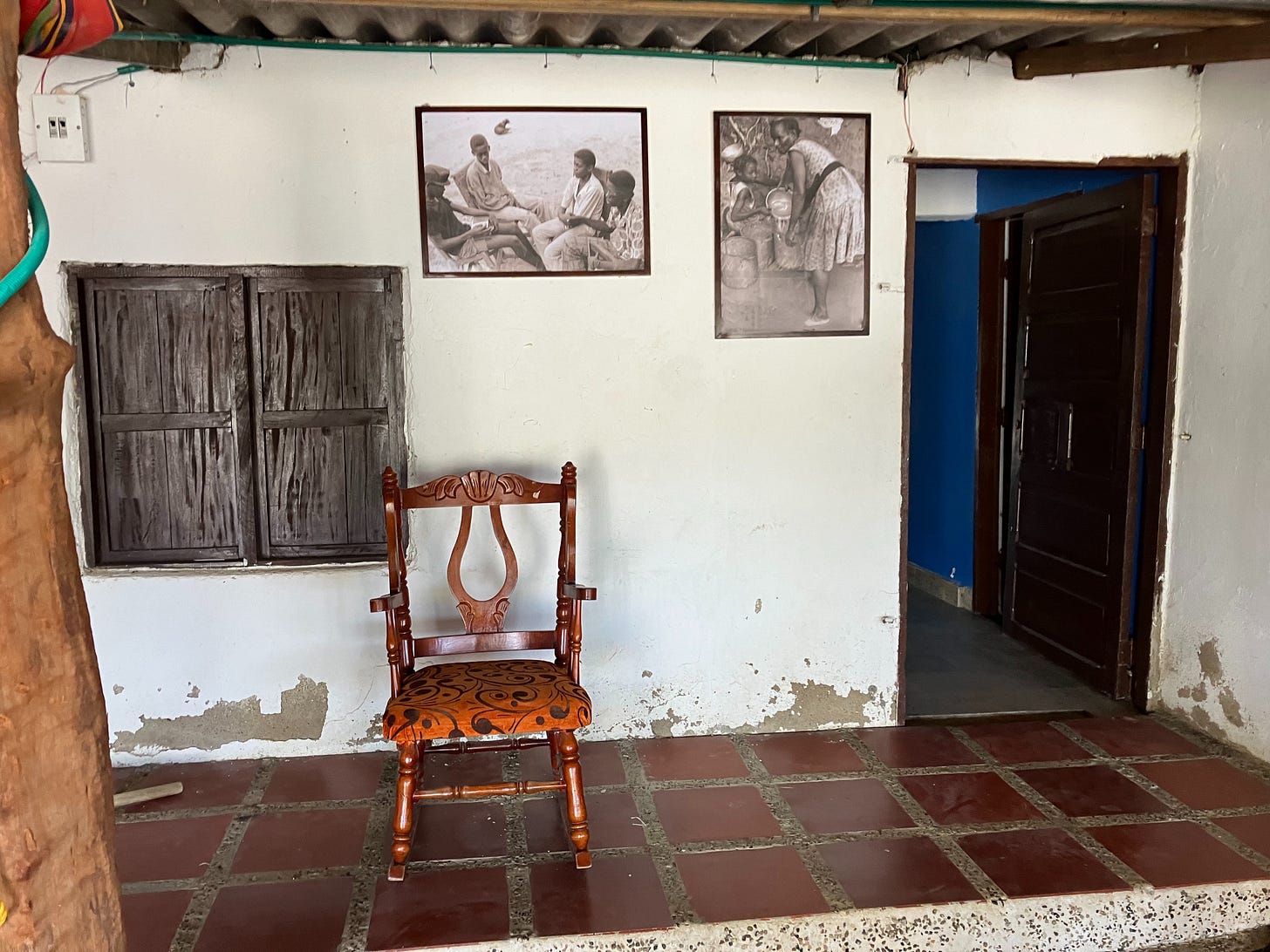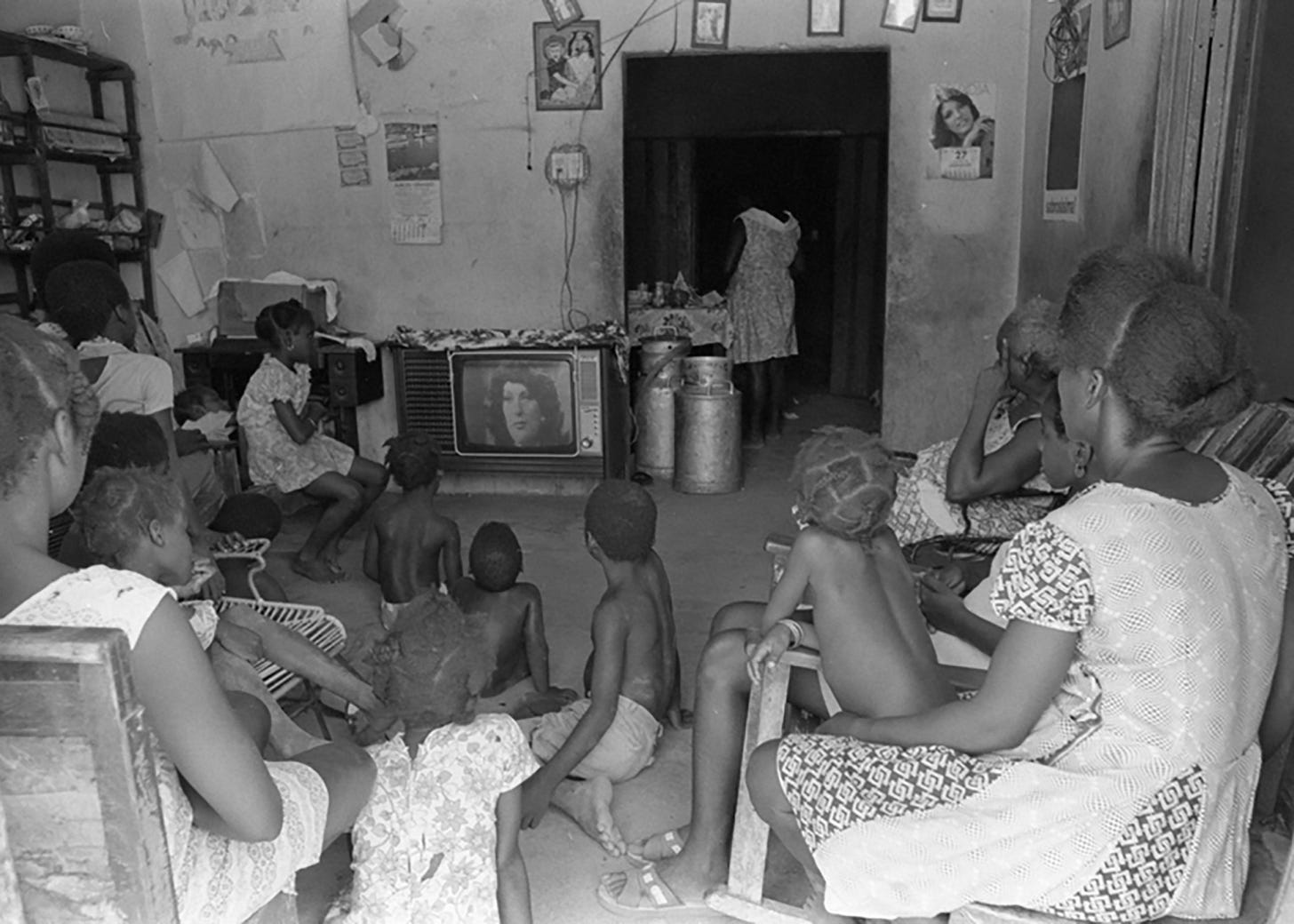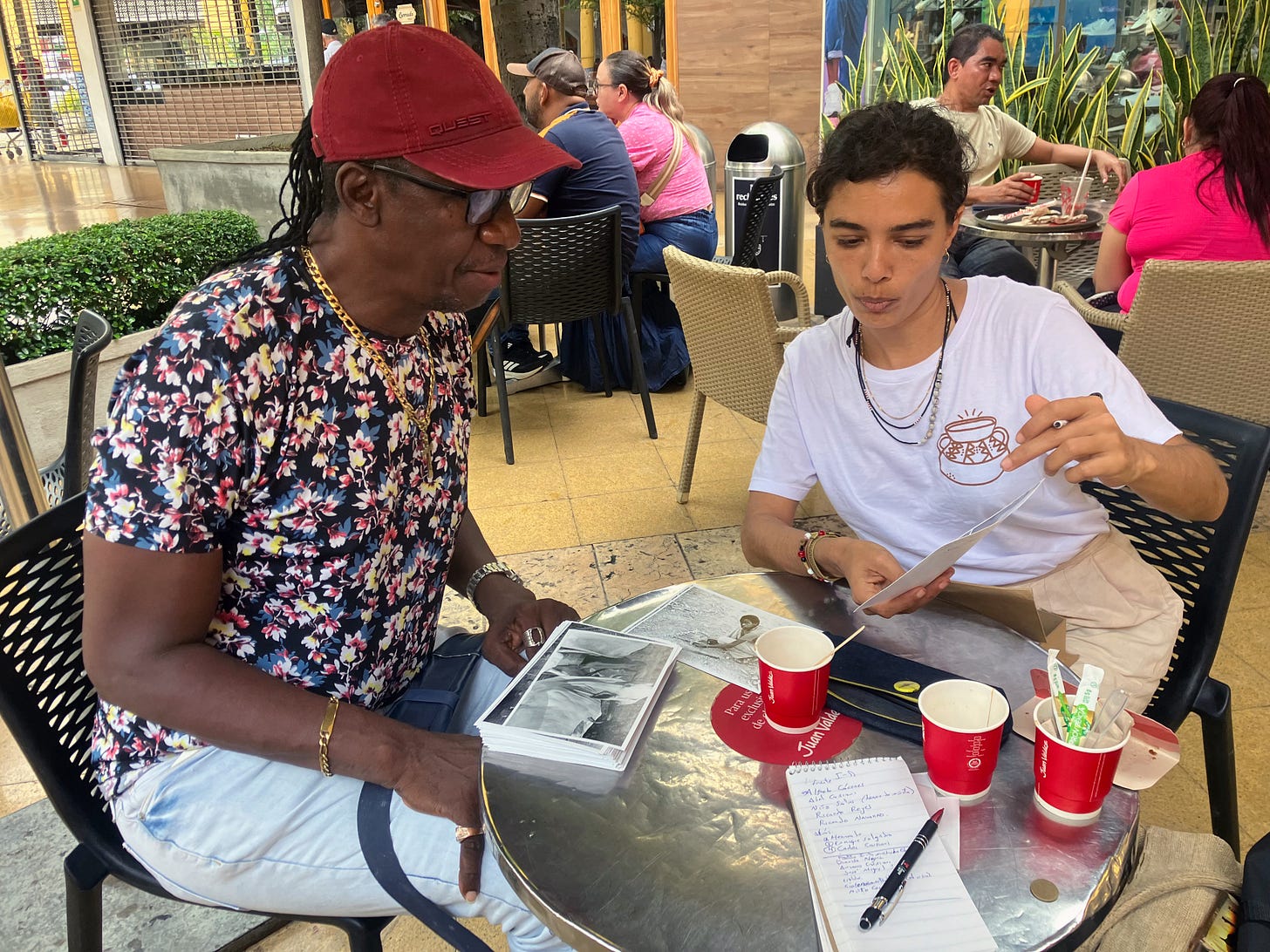Madre Monte and Richard Cross
Bringing the archive to life with the tradition bearers of San Basilio de Palenque
We are one week late this month but we have a good reason. We went to San Basilio de Palenque, Colombia, where almost 50 years ago, Richard Cross took thousands of photos, which are now digitally available at the University Library. We met our local partner, an art collective led by women who care about Palenque and are working on an art and memory project with photographs of this rich photographic archive. One of their members, Mar Ajé, writes about what Madre Monte is and what they do. Then, we describe our partnership with them and how this work will enrich the metadata of Richard’s images by gathering information about people, places, and activities in the community.
A Photographic Archive—Like Water for Memory
By Mar Ajé

Since our birth as the Madre Monte collective, memory has been one of our cross-cutting themes; it is the polyphonic voice from the past, but also the root from which we can redefine our present and—why not?—envision futures.
History is a political territory, where absent voices are increasingly evident, especially those of black women. The fragment of the poem “A Litany for Survival” by Audre Lorde that says, “For all of us this instant and this triumph. We were never meant to survive,” today inspires us to add, “We weren’t supposed to tell our perspectives for the history.”
A fine weave made up of small revolutionary actions, alien to individuality, is our strategy to let the past flourish with black and maroon voices. In this context, the encounter with Cross's archive goes beyond its initial goal framed in the research with Friedemann; it is recycled and transformed to become today a device in our process of reviving memories. These dynamics of dialogue and circulation of historical material are also key to reconstructing the historical relations between the global South and North.

Although Nina Friedemann's books on Palenque are widely recognized in the community, it was in 2023, during the Vist Project's Eco-23 Scholarship—where we represented Colombia—that it grew our interest in finding which photographic archives of Palenque existed. After searching in several places, we found the Tom & Ethel Bradley Center, which was willing and open to allow us to immerse ourselves in the four thousand photos of the community captured by Cross.

Finding familiar faces and landscapes touched deep chords in us—so, in the search to bring back these images, we initially found in the cyanotype an appropriate medium where they could pass through our hands, through the plants, waters, and sun of our territory in a metaphorical rebirth. This is how our photographic series Mboso ri Apú ~ Voices of Water comes to life.
We knew this would not be the only work with this archive, so we set ourselves a series of objectives that could turn it into a living landscape that would be a breeding ground and a place for experimentation with other interpretations and narratives, evidently from Palenque. We asked ourselves, what lies beyond the interpretations that anthropologists have made, what else is missing because these stories have taken center stage? Thus, we are currently working on a project for Ibermemorias, where we are developing a second phase of our creative process with this archive.
Madre Monte and the Bradley Center
By José Luis Benavides

We finally made it to San Basilio de Palenque! During our NEH grant work, we planned to travel to Palenque but, due to the pandemic, we couldn’t travel at that time. Slowly, however, Richard Cross’s photographs of Palenque found their way to where they are treasured the most—the Palenquero community in general and the local art and culture collective Madre Monte in particular. Last month, Marta Valier and I traveled to Cartagena and Palenque and met with members of Madre Monte in person (we have been in contact with them for more than a year now).
The purpose of the trip was twofold. First, meet with Madre Monte and see part of their initial work on memory and metadata creation under the grant Ibermemoria awarded them—they are still waiting for the funds to be distributed. Second, share with Madre Monte the images of Palenque de San Basilio captured by Richard Cross in the 1970s, so they can fulfill the terms of their memory grant work and advance new creative projects. Our partnership work will allow us to enrich the information about Cross’s photos currently in the University Library’s digital collection. In addition, we wanted to talk with Madre Monte members about the exhibition of their work we are planning at the Museum of Social Justice for January 2026.

Community Tradition Bearers
By José Luis Benavides
Madre Monte organized several meetings with sabedores—community tradition bearers in Palenque. We showed them a sample of around 130 images (some printed, some still in digital form) as a memory exercise to discover who was in the photos, where, and the type of activity in the photograph. For example, in the image below, we couldn’t identify who was in the photo as everyone is with their back to the camera. Still, we learned from the sabedores about the place and the TV program on the screen. The photo shows the house of Fermín Herrera, one of the most respected elders in the community who had the resources to buy a television set, where several people gathered to watch the soap operas. The program shown on TV is a Venezuelan soap opera with actor Ivonne Attas, who played the villain in several soap operas at the time. During the 1970s, as registered by Colombian anthropologist, Nina de Friedemann, young Palenqueros migrated to work in Cartagena, Barranquilla, and Venezuela.









